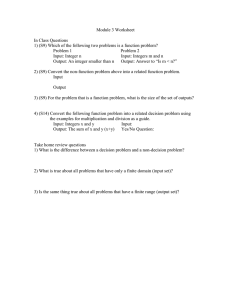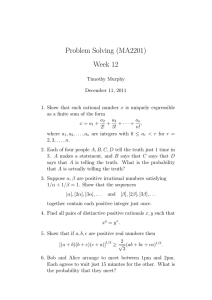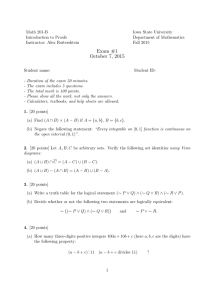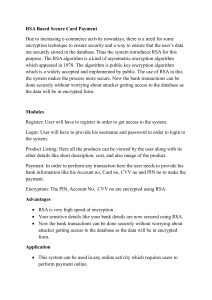COT 4110 Homework #4 Assigned: 10/19/99 Due: 10/28/99 10 am.(my mailbox)
advertisement
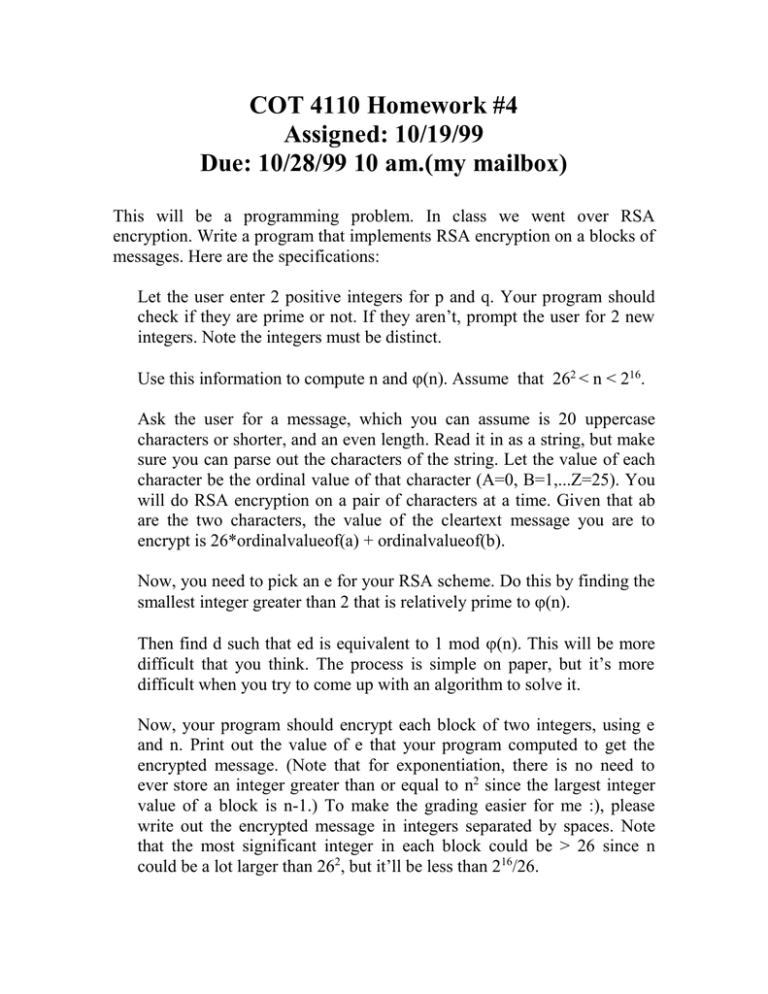
COT 4110 Homework #4 Assigned: 10/19/99 Due: 10/28/99 10 am.(my mailbox) This will be a programming problem. In class we went over RSA encryption. Write a program that implements RSA encryption on a blocks of messages. Here are the specifications: Let the user enter 2 positive integers for p and q. Your program should check if they are prime or not. If they aren’t, prompt the user for 2 new integers. Note the integers must be distinct. Use this information to compute n and n). Assume that 262 < n < 216. Ask the user for a message, which you can assume is 20 uppercase characters or shorter, and an even length. Read it in as a string, but make sure you can parse out the characters of the string. Let the value of each character be the ordinal value of that character (A=0, B=1,...Z=25). You will do RSA encryption on a pair of characters at a time. Given that ab are the two characters, the value of the cleartext message you are to encrypt is 26*ordinalvalueof(a) + ordinalvalueof(b). Now, you need to pick an e for your RSA scheme. Do this by finding the smallest integer greater than 2 that is relatively prime to n). Then find d such that ed is equivalent to 1 mod n). This will be more difficult that you think. The process is simple on paper, but it’s more difficult when you try to come up with an algorithm to solve it. Now, your program should encrypt each block of two integers, using e and n. Print out the value of e that your program computed to get the encrypted message. (Note that for exponentiation, there is no need to ever store an integer greater than or equal to n2 since the largest integer value of a block is n-1.) To make the grading easier for me :), please write out the encrypted message in integers separated by spaces. Note that the most significant integer in each block could be > 26 since n could be a lot larger than 262, but it’ll be less than 216/26. Next, use d and n to decrypt the encrypted message. This process should be identical to the encryption process except for the fact that a different exponent is being used. Print out the value of d your program is using, and then the decrypted message, back in characters. This should be the original message type in. You can do your program in java, c++ or pascal. I hope that’s enough options. (Note that a c program will compile and run the same way in c++...) I want a printout of your code, and a disk with your file(s). I’d prefer it if you could do the java and c++ programs in unix so I could use javac and g++ to compile them respectively. If you do yours in Pascal, use Turbo Pascal 7.0 in windows. It’s on all the computers in the various labs. I am sure questions will come up, seeing as how the last time I implemented this was last spring, so I might have left some details out. Please ask, either call or email.


